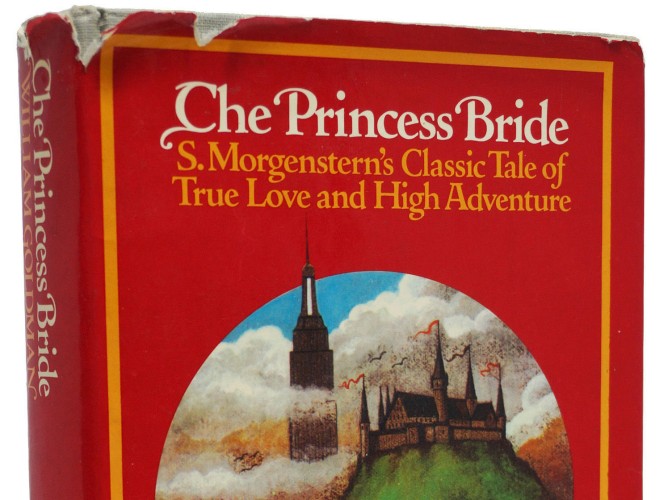
The fantasy boom of the late 60s came to full fruition in the 70s, drawing older works back into the light as well as bringing many new ones. The decade also saw the publication of important works in particular sub-genres, such as vampire fiction, fairy tale retellings, time travel fiction and more.
Below I’ve listed what I believe to be the 12 most popular or significant fantasy novels published between 1970 and 1980. I’ve used the year each novel was first published and I’ve tried to use the original cover or jacket from that year:
(To enlarge a cover simply click on it and the image gallery will open)
- Nine Princes in Amber (The Chronicles of Amber), Roger Zelzany, 1970
- Watership Down, Richard Adams, 1972
- Elric of Melniboné (The Elric Saga), Michael Moorcock, 1972
- The Princess Bride, William Goldman, 1973
- Interview with the Vampire (The Vampire Chronicles), Anne Rice, 1976
- The Forgotten Beasts of Eld, Patricia McKillip, 1974
- A Spell for Chameleon (Xanth), Piers Anthony, 1977
- Lord Foul’s Bane (Chronicles of Thomas Covenant the Unbeliever), Stephen R. Donaldson, 1977
- The Sword of Shannara (Shannara Trilogy), Terry Brooks, 1977
- Beauty: A Retelling of the Story of Beauty and the Beast, Robin McKinley, 1978
- The Neverending Story / Die Unendliche Geschichte, Michael Ende, 1979
- Kindred, Octavia E. Butler, 1979
In 1977 Terry Brook’s The Sword of Shannara became the first fantasy fiction novel to make The New York Times bestseller list, appealing to readers who had fallen in love with The Lord of the Rings. Ballantine used it to launch their new subsidiary Del Rey Books, and its success further boosted the commercial expansion of the genre.
Another significant development in the 70s was the publication of the Ballantine Adult Fantasy series. Launched in 1969 and edited by Lin Carter, the line consisted mostly of reprints of novels from earlier decades and brought many newfound popularity. Ballantine’s publication of Evangeline Walton’s 1936 novel The Island of the Mighty and its formerly unpublished sequels was an important in inspiring the sub-genres of Celtic Fantasy and Historical Fantasy.
Young Adult Fantasy continued to enjoy popularity, with the publication of McKillip’s The Forgotten Beasts of Eld, Goldman’s The Princess Bride and McKinley’s Beauty (an early work of the currently popular sub-genre of YA Fairy Tale Retellings). The 70s also saw the continuation of several popular series that started in the 60s, such as Le Guin’s Earthsea Cycle (The Tombs of Atuan 1970, The Farthest Shore 1972), L’Engle’s Time Quintet (The Wind in the Door 1973, A Swiftly Tilting Planet 1978) and Cooper’s Dark is Rising Series (The Dark is Rising 1973).
Anne Rice’s Interview with the Vampire was critical to the resurgence of Vampire Fiction and the development of Paranormal Fantasy, while Richard Adams’s classic Watership Down continued a tradition of Animal Fantasy from earlier decades, with epic themes and allegorical interpretations that appealed to a broad audience.
A Few Interesting Facts
- The Princess Bride is presented as an abridged, edited version of a book by S. Morgenstern that William Goldman loved when his father read to him as a child. In the footnotes Goldman says he discovered, on trying to get his own son to read it, that his father had left out the boring parts, which prompted him to create the abridged version. In truth, no such work or author exists – it is a fictional framing device. Goldman builds this fiction throughout the book, going so far as to mention copyright issues with the estate of S. Morgenstern. The footnotes also include many other fictitious “facts” about Goldman and his life.
- William Goldman wrote the screenplay for the 1987 film adaptation of The Princess Bride, and has won academy awards for his other screenplays: Butch Cassidy and the Sundance Kid and All the President’s Men.
- Terry Brooks wrote The Sword of Shannara over 7 years while attending law school. Many criticised the book for being too derivative of The Lord of the Rings, as it contains similar characters and plot points. Brooks acknowledged the heavy influence in his first novel, but said he later evolved his own style.
- Octavia Butler is a multiple recipient of both the Hugo and Nebula awards. She wrote her best-selling novel, Kindred, in response to hearing a young man say he felt ashamed of older generations of African Americans because of their subservience. She felt he lacked the historical context to understand that survival and the safety of their family often depended on them accepting abuse, and imagined a modern African-American character travelling back in time to experience life in the Antebellum South.
- Anne Rice wrote Interview with the Vampire after the death of her four-year-old daughter Michelle, who is often believed to be the inspiration for the young vampire character Claudia.
- Michael Ende’s Die unendliche Geschichte enjoyed great success when first published in Germany in 1979, selling nearly a million copies in 3 years. An English translation by Ralph Manheim, The Neverending Story, was released in 1983. The book has since been translated into over 40 languages and adapted to film, TV, stage play, ballet, and opera.
- The Neverending Story is normally printed in two colours: red text for events in the real world, and blue-green text for those in the fantasy world.
- Michael Moorcock’s Elric character originally appeared in novelettes in Science Fantasy Magazine in the 60s, the last of which ended with Elric’s death. The first original novel, Elric of Melniboné, came out in 1972 and is actually a prequel to the previous tales. Moorcock was influenced by the work of Poul Anderson, as well as Finnish mythology and Norse legends.
Other 70s Works and Authors
There are some works that didn’t make it into the list above for various reasons, either because they were light on fantasy elements, because I’ve already included the most influential work by that author in this or another decade, because they were magical realism or horror, or simply because I didn’t think they were as significant to the genre as others. However, there are still some worth mentioning:
- The Crystal Cave (Arthurian Saga) by Mary Stewart (1970)
- Deryni Rising (The Chronicles of the Deryni) by Katherine Kurtz (1970)
- Grendel by John Gardner (1970)
- Time and Again by Jack Finney (1970) [time travel fiction]
- The Pastel City (Viriconium Series) by M. John Harrison (1970)
- Mrs. Frisby and the Rats of NIMH by Robert C. O’Brien (1971)
- The Brothers Lionheart by Astrid Lindgren (1973)
- Momo by Michael Ende (1973)
- Tuck Everlasting by Natalie Babbitt (1975)
- The Dragon and the George (Dragon Knight Series) by Gordon R. Dickson (1976)
- The Silmarillion by J. R. R. Tolkien (1977) [posthumously edited and published by Christopher Tolkien with assistance from Guy Gavriel Kay]
- Charmed Life (Chrestomanci #1) by Diana Wynne Jones (1977)
- Bridge to Terabithia by Katherine Paterson (1977)
- What Dreams May Come by Richard Matheson (1978)
- Gloriana by Michael Moorcock (1978)
- Another Fine Myth (Myth Adventures Series) by Robert Lynn Asprin (1978)
- Carrie (1974), Salem’s Lot (1975), The Shining (1977) and The Stand (1978) by Stephen King
- Night’s Master (Tales from the Flat Earth) by Tanith Lee (1978)
- The Bloody Chamber and Other Stories by Angela Carter (1979)
- The Leopard Mask (The Guin Saga) by Kaoru Kurimoto (1979)
- Tales of Nevèrÿon (Return to Nevèrÿon Series) by Samuel R. Delany (1979)
- The Animals of Farthing Wood (Farthing Wood Series) by Colin Dann (1979)
___________________
Are any of these books a favourite? Or would you add another important novel to the list? Feel free to give it a mention in the comments.
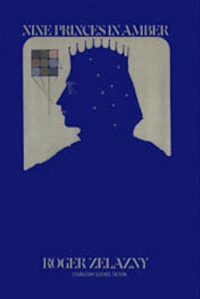
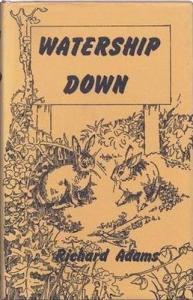
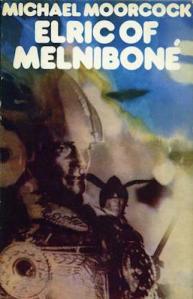
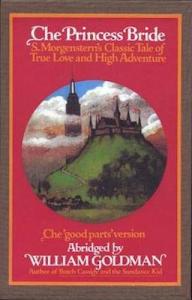

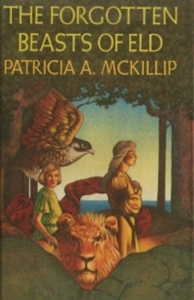






Oddly, or not, I don’t recognise any titles in the ‘also ran’ section, while most of those in the top section became favourite authors well into the 1990s. So, I thank you for providing a sleigh ride back to the day.
Did any of these influence my own writing? Possibly Anne Rice.
LikeLiked by 1 person
You’re welcome! And I’m glad to hear that – it’s not always easy to pick the top line-up for a decade (popularity and influence are hard things to measure!) so it’s nice to hear them “confirmed” 🙂
I actually finally read ‘Interview with the Vampire’ about a year ago – it wasn’t what I’d expected, but I liked it. I’m curious what the rest of the series is like.
LikeLiked by 1 person
They’re brillant. I enjoyed every one of them. Well thought out story world, excellently written. I miss them, could have read another full series. Though I don’t read horror books, not even Gothic. Odd. But that says much about the books.
LikeLiked by 1 person
Pingback: 1970s Fantasy Novels | W.L. Hawkin
Great post! I didn’t know about the different colour inks for Neverending Story… I suppose that would make it too expensive. My cheap Puffin edition is black and white.
LikeLiked by 1 person
Thanks! Ah that’s a shame, I suppose it would be expensive. I actually hired a copy from the library when I first read it, so was fortunate enough to get a lovely old hardcover edition with the different coloured inks. Was a bit of a surprise when I opened it though – I’m so used to black text.
LikeLiked by 1 person
Wow yes, I imagine it would be weird… the only book that has red text, that I’ve seen, is some editions of the Bible!
LikeLiked by 1 person
Oh true, now you mention it I think I’ve seen a bible with red text too. I guess that might be why the colouring gave it a bit of a biblical/old-manuscript feel.
LikeLiked by 1 person
Being German the two-colored version is what I’m used to – it would be weird for me NOT to have that! 😁
I think, some cheaper (German language) editions have the normal black font for all text but many editions (most, I hope) have the two-colored one.
LikeLiked by 2 people
Thank you for this. How fascinating!
LikeLiked by 1 person
Glad to see another installment of your Popular Fantasy Novels posts. I’ve read several from this decade. Recently read the Sword of Shannara but didn’t like it for similar reasons you mentioned above. I found it very boring. Robin McKinley is one of my fav authors. I didn’t know Beauty was pubbed in the ’70s and same too with the Neverending Story, another of my favs.
LikeLiked by 1 person
I started reading Sword of Shannara a few years back but decided it wasn’t for me either (what I read of it didn’t grab me). It’s impressive the effect it had on the success of the genre though – obviously a lot of people loved it. I haven’t read Beauty but it looks up my alley so I want to!
LikeLike
Oh yes! Beauty should be a good one. It’s been a while since I’ve read it so I’d like to give it a read too. Hope you enjoy it. McKinley’s writing is very descriptive and beautiful. I love it.
LikeLiked by 1 person
Reblogged this on Blue Notes and commented:
These are so wonderful.
LikeLike
The Forgotten Beasts of Eld is a particular favorite of mine. How could I resist those amazing creatures? I also remember The Princess Bride and The Dragon and the George very fondly. The swashbuckling is over the top in both!
LikeLiked by 1 person
That’s great to hear about Forgotten Beasts, I’d like to read that one. I’ve loved the Princess Bride movie since childhood (I enjoyed all that swashbuckling!) and have been wanting to read the book for a long time – even more so after writing this post.
LikeLike
Loved them all!! The Sword of Shannara, as well as the world/series it carved and crafted, is one of my all time favorites.
Very nice. Thank you.
LikeLiked by 1 person
I wrote about you and your blog on my blog. Take a look. If you want me to change anything, let me know.
https://inkhammer.wordpress.com/2019/02/13/thoughts-on-fantasy/
LikeLiked by 1 person
Thanks so much for mentioning me! I checked out the post – it’s really nice to know this blog is appreciated 🙂
LikeLiked by 1 person
I love it!!! Thank you!!
LikeLiked by 1 person
You are most welcome.
LikeLiked by 1 person
I never realized Anne Rice’s vampire series was so old. I just grabbed The Vampire Lestat on audiobook. I remember reading those as a kid. Thanks for this bit of history. 🙂
LikeLiked by 1 person
You’re welcome! I also didn’t initially realise what an early work it was. The sequels were published in the 80s, 90s and 00s and I think Rice is releasing more, so that’s probably why the series as a whole feels more recent – but it’s still interesting that the first book was published over 40 years ago.
LikeLiked by 1 person
Great post! I am familiar with Anne Rice’s work but I will definitely look up William Goldman. You asked if there are some other important novels to be added on the list. Well, I’m not sure this one can be qualified as “important”, but it is certainly informative to mention here that Pamela L. Travers, the author of Mary Poppins, published in 1975 her own retelling of Sleeping Beauty. The title is “About the Sleeping Beauty”. It never really got any attention from the public. So, maybe if you write a post about obscure and forgotten writings by famous authors you can add this one on it.
LikeLiked by 1 person
How interesting – I didn’t know P.L. Travers also wrote a retelling of Sleeping Beauty! I suppose when you read about her and look up her books all you see is Mary Poppins (which I included in the 1930s & 40s post), but that’s interesting she wrote this book too. Certainly one for the lesser-known list.
LikeLiked by 1 person
Oh man. Sooo many good ones on this list.
Of the ones I have actually read, my favorite is Watership Down. It is very long, but the last few scenes are *amazing* … and the book needed every one of those pages to make them so.
As for The Princess Bride, I think of the book as more of a fantasy parody for adults. 100% snark. It’s a funny read, but hard to get into emotionally because of all the snark. For me at least. However, the MOVIE is another story. It is the best movie! The kind that, when you see it, you say, “Why don’t they make movies like this all the time?” It keeps the funny, but makes the story sweet. When I first saw it, as a kid, I didn’t realize that it was a comedy. I thought it was a wrenching love/adventure story for the ages. 😀
Question: Wasn’t Pierce Anthony writing during the 70s? I guess he’s classed more as sci-fi, but I believe he has some fantasy parody series too. There’s one with a family of centaurs. But maybe those were published later?
LikeLiked by 1 person
Yes it was a great decade! I’ve yet to read Watership Down but it’s very high on my list.
That’s interesting you felt that way about The Princess Bride – I haven’t read the book yet but from the excerpts I’ve read I understand what you mean about snark! I have seen the movie though and I adore it too. It really does balance the sweetness and the humour perfectly. And I think there’s enough wrenching love story in there to see why you thought that as a kid 🙂
Piers Anthony was indeed writing in the 70s. I included his first Xanth book ‘A Spell for Chameleon’ in the main list above – I just didn’t add any info in the notes or facts section (didn’t want things to get too long). I’m planning to mention him in the next decade though together with Terry Pratchett as an important early writer in the comic fantasy sub-genre.
LikeLike
This is a great post! There are so many excellent titles here.
Thank you for the little fun facts! The Anne Rice one makes so much sense, I felt like Claudia was such a well written character. If she is based off Anne’s deceased daughter, then the emotion behind the character really reflects in her writing.
I’ve definitely added some of the books in the list above to my to read list.
Thank you for that!
LikeLiked by 1 person
Thanks! And yes there’s certainly a lot of sorrow and emotion that comes through in the book surrounding Claudia – she’s a very vivid character.
I hope you enjoy the books you added! I still have to read some of them myself, so there are a few more on my list now as well.
LikeLiked by 1 person
Well I’ve read seven of your main picks. Have loved ‘Watership Down’ for years. (Note – anyone who thinks it’s a kids book cos bunnies, it’s really not. My mum thought it was for kids, and got it for me when I was nine.) I love the metafictional aspects of ‘The Princess Bride’. I’m a huge fan of ‘Lord Foul’s Bane’. Donaldson’s series ‘The Chronicles of Thomas Covenant’ was big during the eighties, and I have a signed copy of this book. So many good memories from these books.
LikeLiked by 1 person
Great so many of these are attached to good memories. And yes I get the definite sense Watership Down is not a kids book – I saw the animated adaptation as a child (again i think my parents thought bunnies=kids film) and it was actually quite disturbing. I’m hoping that when I read the book now I’ll be able to appreciate the story in a way I couldn’t back then, and in its original form too.
LikeLiked by 1 person
Love reading all these facts! I still need to read so many of these- especially Princess Bride- which I really wanted to read because of the background (and the movie of course 😉 ) And I’ve been planning to read sword of shannara cos it’s such a classic (though of course I’ve heard it’s derivative of LOTR) I definitely need to read McKilip and McKinley books- they’ve been on my tbr for a while. I also love Neverending Story- it’s my favourite from this selection 😀 Great post!
LikeLiked by 1 person
Thanks!! 🙂 Many of these are on my to-read list too, and the Princess Bride is really high up there – I’m very curious what the book is like. And I also started reading Shannara due to its classic status. I got a ways in and decided it wasn’t for me, but I’m glad I tried otherwise I would have always wondered. The Neverending Story really is wonderful, and so imaginative – I loved all the different fantastical places and how they were described (e.g. the desert with the different coloured sands and the lion).
LikeLike
The Brothers Lionheart would certainly have made my top list for this decade, I find it weird that it is so little known outside of Scandinavia.
LikeLiked by 1 person
Yes, I guess Pippi Longstocking was the one Lindgren became more widely known for outside of Scandinavia, but it’s strange The Brothers Lionheart didn’t achieve the same international attention. I’d certainly heard the title before, but didn’t really know much about it until I did the research for this decade.
LikeLiked by 1 person
Yes, or any of her other works. But of course the attention varies, as far as I understand it outside of the Nordic countries most of her works are popular in e.g. Germany and the Netherlands and apparently Karlsson-on-the-roof is doing well in Russia. And Ronja recently made it into a Japanese anime series. So perhaps it is mainly the English speaking world that is loosing out. It is weird anyway, I would expect at least Ronja to work well.
LikeLiked by 1 person
Interesting that certain works seem to strike chords/be popular in certain countries. I grew up with the 90s Pippi Longstocking TV series (in English), but now I live in Germany I notice those books are even more popular with kids here, along with the Brothers Lionheart. I’d never heard of Ronja though! Which goes to show the English-speaking world probably is missing out on more of her works.
LikeLiked by 1 person
Mio my son, Brothers Lionhearth and Ronia the Robber’s Daughter are her three fantasy novels so those may be most relevant for you. Ronia (Ronja in Swedish) is probably the easiest starting point.
She also wrote lots of non-Fantasy fiction besides Pippi, most of which are hugely popular among Scandinavian children.
LikeLike
Pingback: Mythical, Mystical, Magical Reading Challenge 2021 (being edited) – Juulna’s 2021 Reading Challenges
I’m a bit surprised to find Bridge to Terabithia mentioned.
In fact, being from Germany I had not known about this book until the movie adaptation came out and being under the impression that this was a fantasy story I got a copy of the book to read before watching the movie.
To be frank, I was quite disappointed because there’s no fantastical element at all in the book. I’m not saying it’s a bad book but it’s not what I was interested in.
It doesn’t belong on a list of fantasy novels because it quite simply isn’t one. Or did I miss something?
Otherwise, excellent list! 😀
LikeLike
Oh I didn’t realise there was no fantasy element in the book – I guess I was similarly deceived by the movie and the fact that people seem to often refer to it as a fantasy. Perhaps it shouldn’t be on the list then… but at least it wasn’t in the top 12 (those were the books I focused on the most). Thanks!
LikeLike